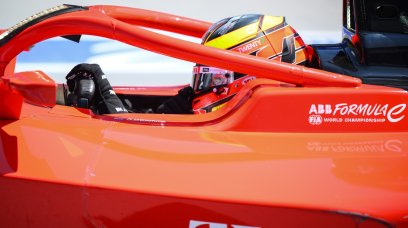After the problems in Spain, Red Bull tried to solve their DRS (Drag Reduction System) issue for good in the run-up to the Monaco Grand Prix. Chief Engineer Paul Monaghan was sure they were on top of it. The problem did indeed seem to be solved at Monaco, but there the speeds that DRS must withstand are considerably lower than the 340 kilometres per hour reached on Baku's long straight. In a way, the Baku City Circuit is a good venue to check if the DRS systems can withstand a phenomenon called 'buffeting'. It is the phenomenon whereby disturbed air repeatedly 'bumps' into the rear wing. Sergio Perez had the same problem in Qatar last year, but the cause is slightly different. At that time, there was an assembly fault with one of the DRS bars, but on this occasion it is purely down to the pressure that the activator (see image above) of the DRS system can withstand. The inherent pressure generated by the activator to keep the valve open is no match for the airflow at high speed. Especially in the second stage of opening, the problem gets worse.
Did Red Bull go overboard with weight reduction?
This season, the overall weight of the car proved to be a major problem for Red Bull. The team claimed the RB18 was 15 kilos too heavy. In the quest to save weight, the hydraulic system that operates DRS was also overhauled. This undoubtedly yielded valuable gains in weight saving, but Red Bull may have gone a bit overboard. The Milton Keynes-based squad then reworked the rear wing for the second free practice session and added reinforcements. It should be a temporary solution, as Red Bull are confident that the problems will not reoccur on other fast straights such as Monza and Spa-Francorchamps.
Most read






